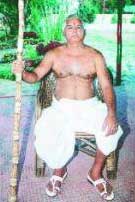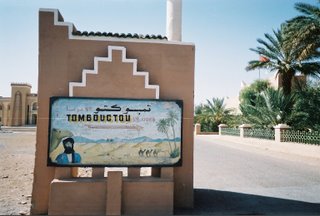 A friend has commissioned a project on "Futuristic Business Opportunities" with some ISB students and that set me thinking about predictions for the future. It is a difficult terrain and the world's greatest experts have fared badly in it. In 1990, John Naisbitt wrote 'Megatrends' and Alvin Toffler wrote 'Powershift'. In both, India features as a peace-loving, backward, democratic country which buys a lot of arms and has satellites. Neither could predict the arrival of India on the world stage. Both thought Japan will set the fashion and cultural trends of the future. China's emergence is suspected but not the scale of its achievements and growth.
A friend has commissioned a project on "Futuristic Business Opportunities" with some ISB students and that set me thinking about predictions for the future. It is a difficult terrain and the world's greatest experts have fared badly in it. In 1990, John Naisbitt wrote 'Megatrends' and Alvin Toffler wrote 'Powershift'. In both, India features as a peace-loving, backward, democratic country which buys a lot of arms and has satellites. Neither could predict the arrival of India on the world stage. Both thought Japan will set the fashion and cultural trends of the future. China's emergence is suspected but not the scale of its achievements and growth.Let us just look back at 1995 in India .Even ten years back, nobody would have thought that India would be an emerging superpower in 2005 . We cannot today manage without a cellphone and e-mail which barely existed then .The aspirational products for the upper-middle class were microwave ovens,compact music systems , 1000 cc cars and holidays in Bangkok. Today the aspirational lifesyle elements are Plasma TVs , 2.5 lit SUVs and holidays in Serengiti .The hottest job sectors were then in consumer goods sector. Today, it is sort of passe. Ten years back,the senior executives earned about Rs 8 to 10 lacs in a year. Today it has reached Rs 35 to Rs 50 lacs . There were no malls or multiplexes in the country and today any self-respecting one million population town has malls. There were no Indian CEOs of global companies or widely- known management gurus .The last decade has thrown up Rajat Gupta,Rana Talwar,Prahalad,Mohan Sawhney,Indra Nooyi and Vindi Banga etc. to the top echelons of corporate success.
The interesting thing about these movements is that practically none of the mainstream media was able to either spot or predict these changes. So the only possibility of predicting even for ten years is possibly to go through expert opinions in specialised journals or research papers . One megatrend in India has been that the it has closed the gap with the rest of the world in lifestyles. But in cultural trends it has Indianised itself more in line with many countries in the world. So today Bollywood movies excite the passions of even the snootiest in our cities. Hindi pop music has become acceptable in all circles.
Going by the present trends and overall global directions ; it seems positive that India, China, South Africa and Russia will start playing important roles in the world displacing France, Germany and Britain . The upper-middle class ,with the greater purchasing power of the rupee,will have actually a better lifestyle than westerners including having customised nature or heritage holidays and premium cars like Porsche 911 or Audi R8. The lower-middle class then will have a lifestyle which the middle class has now .
India will be amongst the principal players in auto componenets, healthcare and tourism besides IT . We will also see a dominant presence of Indians in Wall Street and international media houses in the next five years .
But certain things may not change - like the Congress and BJP squabbling over Ayodhya, India being at 117 in the FIFA rankings or Rekha dancing to a sensuous number .







